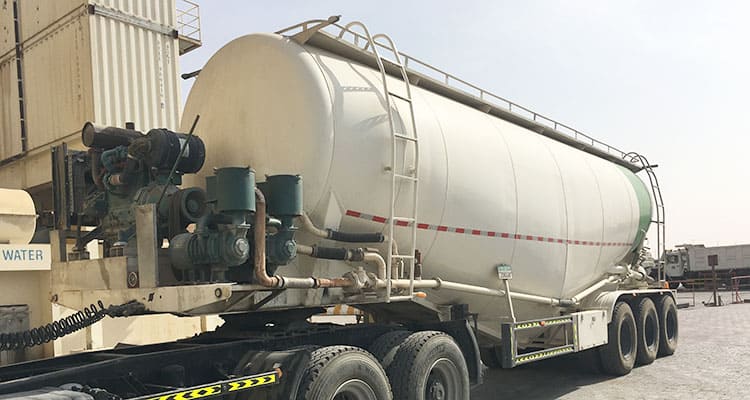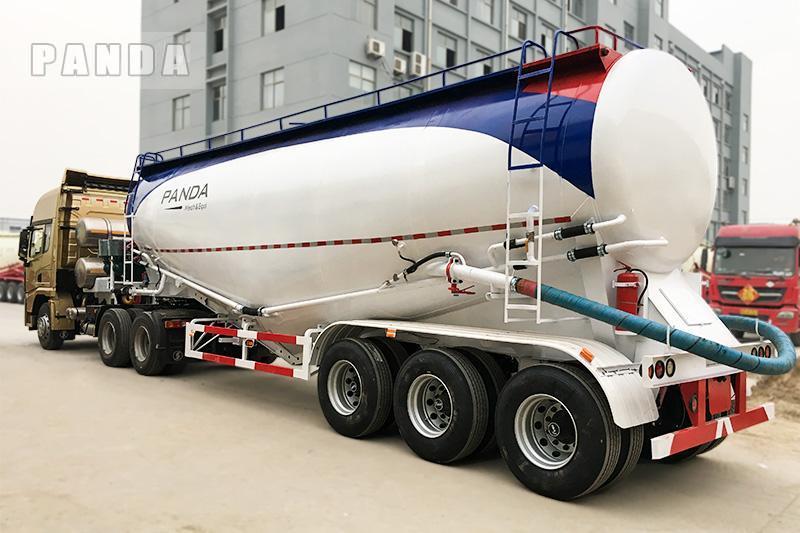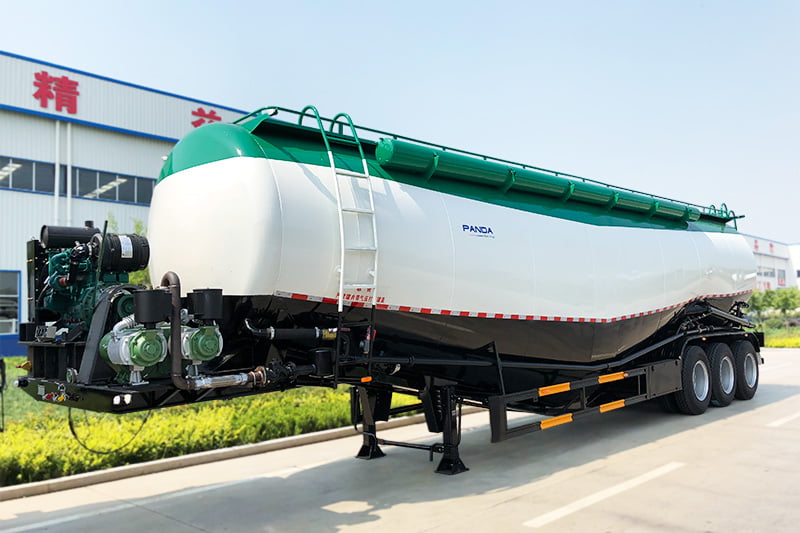What is a bulker truck?
As for my understanding cement bulker is a truck loaded with cement just like petroleum containers. The cement from bulkers is stored in silos at RMC plants. Bulkers are used because the daily usage of cement in RMC is in tonnes so one can’t store cement in bags or jumbo bags.
What is a bulker trailer?
Bulker trailer also known as a cement trailer that is?used?for?carrying?different?bulk?materials items like cement, flour, wheat, lime is calcium carbonate, and else.

Best-selling fuel tanker recommended
1. 50 Ton Cement Bulk Trailer For Sale
Loading rate >98% fully filling
Residual rate <0.3%
Delivery height >30m suitable most silo
Faster unloading >1.5ton/min

2. 2-3 Axle 30-38 CBM Pneumatic Trailer
Transport: cement, sand, flour, and other granular materials.etc;
Discharging speed:1.5 tons/minute
Supply Ability: 200unit/Sets per Month

3.?30 Ton Bulk Cement Tanker Trailer For Sale
Panda Mech is 30-ton bulk cement tanker manufacturer from China. We supply 27 cbm bulk cement trailers for sale. 27 cubic meter cement trailer capacity 30 ton.

4.?85 Ton Cement Trailer For Sale
Panda Mech is an 85-ton cement trailer manufacturer from China. We supply 85 Ton cement trailers for sale. 70 cubic meter cement trailer capacity 85 tons.

CONCLUSION:
If you want to purchase a cement bulk truck or have doubts about the cement bulk trailer types, then leave message for us. PANDA MECH is your best choice. As a professional manufacturer with decades of production experience, we have provided various production solutions for tens of thousands of users at home and abroad.
We can not only help you choose the cement bulk truck that best suits your needs, we can also provide comprehensive after-sales service, whether it is about the operation, repair, and maintenance of the cement tanker trailer.
Other:
What is a pneumatic tank trailer
A pneumatic tanker is a large body tank trailer that empties via a pump and forced air. It is primarily used to transport building materials, food products, and chemical products.
What is dry bulk transportation?
In fact, dry bulk transportation is the transportation process for dry materials. Most frequently these dry materials come in large quantities. Thereupon, the dry bulk transportation includes hauling from the place of materials¡¯ origin, transportation, and unhaling of the materials.
What do dry bulk tankers?
The dry bulk cement tanker trailer used for transporting cement is a bulk powder transport vehicle made of a combined specially designed chassis, pneumatic piping system, tanker and discharging units. … With the use of this type of trailer, packaging and discharging costs are greatly reduced.
How do dry bulk tankers or dry shipping bulk tankers move?
Bulk cargo is commodity cargo that is transported unpackaged in large quantities. It refers to material in either liquid or granular, particulate form, as a mass of relatively small solids, such as petroleum/crude oil, grain, coal, cement, powder lime or gravel. This cargo is usually dropped or poured, with a spout or shovel bucket, into a bulk carrier ship’s hold, railroad car/railway wagon, or dry bulk tankers truck/trailer/semi-trailer, dry shipping bulk tankers body. Smaller quantities (still considered “bulk”) can be boxed (or drummed) and palletized. Bulk cargo is classified as liquid or dry.
What is a dry bulk trailer?
The dry bulk trailer is manufactured in the form of a large body tank. … Later on, most dry bulk trailers are manufactured as pneumatic tankers. Therefore, these trailers are manufactured in a way that they have a single compartment that serves for loading into and unloading.
What is carried in a dry bulk cargo trailer
The dry bulk trailer is manufactured in the form of a large body tank. As a matter of fact, these trailers have numerous advantages in comparison to other trailer types. In general, the main materials that dry bulk trailers are transporting are food products, chemical products, and building materials.
How to unload a dry bulk trailer or pneumatic dry bulk trailer
Prior to offloading the product, it is important to check the contents surrounding the offload site. Any offload without the necessary checks puts your product at the risk of contamination. Verification of the offloading site of its capacity and integrity structurally needed prior to product discharging is very vital. Take off the discharge hose from the tanker¡¯s storage tube and connect it to the discharge line and the offloading site as well.
Check the storage facility for sufficient capacity for the loaded cargo. If your dry bulk tanker trailer is equipped with a filter actuator, make sure it is closed. Connect the air supply securely to the air inlet coupler. Next, open up the proportioning valve and then engage the compressor.
Open up the central aeration valve and then close down the compressor valve. If there is an air valve at the top of the tanker, also open it. Then, pressurize the pneumatic dry bulk trailer based on the pressure specification for the material onboard. Don¡¯t go past the pressure limits provided.
Once the tanker has reached the provided pressure of operation, half-open the proportioning valve. At this state, carefully and gradually half-open up the discharge valve to the front hopper. When the material starts to flow, open the discharge valve fully. Once the tanker pressure starts to drop, make sure you close the front discharge valve.
radially open up the discharge valve adjacent to the hopper to offload it. Every time the pressure starts to fall quickly, close down the dry bulk trailer discharge valve.
The same procedure should be repeated for all hoppers in the pneumatic dry bulk trailer. Each hopper can be purged by slowly opening up and closing down each of the discharge valves, working it out from the front to the rear section of the trailer.
When this is done, disengage the compressor and open up the compressor down valve to relieve off the tank pressure. Disconnect the discharge hose and stow it.
Make sure that all valves except for the blowdown one are closed and the blowdown valve should always be kept open. Finally, you have successfully offloaded your cargo from the pneumatic dry bulk trailer, you can now install the cap back along the discharge line.
